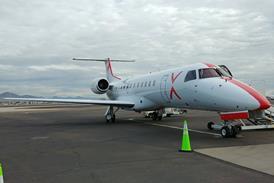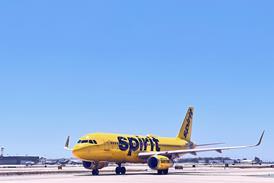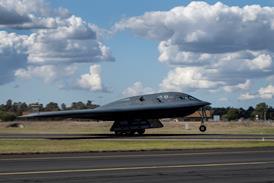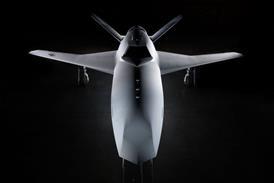Pierre Beaudoin was named president and chief operating officer of Bombardier Aerospace in October 2001, having previously headed the business aircraft division. He spoke to Flight International's Paul Lewis in Montreal before flying to London for the Farnborough show

|
|
|
Q: What impact did the events of 11 September have on the regional aircraft industry and how was Bombardier affected?
A: There was a sharp decline after 11 September, but a quick rebound in the case of regional aircraft. March over March last year, capacity increased by 15% while traffic has increased by 20%.
Load factors May over May are also up. Orders have yet to come back to the magnitude of pre 11 September because airlines in general are in a difficult financial situation. Bombardier is fortunate; we have a strong backlog. We were very aggressive last year and got the bulk of the orders, so we are still increasing production.
Q: Is customer financing a challenge?
A: We have to work harder with our customers to find financing solutions. I think the market is coming back on both debt and equity, but it's more expensive. I think our customers have still to come to grips with the fact that credit rating has come down. US Airways represents probably the last big order and definitely financing will be challenge.
Q: How is the Dash 8 Q400 performing in a turboprop market that was lacklustre even before 11 September?
A: The market has been tougher since September, but we feel the fundamentals are there for turboprops of the size and speed of the Q400. Demand will materialise. This is a very profitable aircraft for shorthaul segments and with today's economic pressure, the Q400 has even more appeal.
Q: The Q400 and CRJ700's recent entry into service has proven a challenge. Are there any lessons to be drawn from this?
A: The Q400 had some challenges, but today it has a dispatch reliability of 99.5%. The CRJ700 is a good example of lesson learned – we're already well above 99% dispatch reliability.
There are some technical issues, but this is part of constantly pushing the envelope. We have to make sure as a company that we enter into service with flawless execution.
Q: Do the CRJ700 and 900 adequately address the 70-90 seat market and can they compete effectively against the new Embraer 170 and, if it ever flies, the Fairchild 728JET?
A: The CRJ700 is a new product and what the regional industry is looking for in terms of great economics combined with good comfort. The CRJ700 and 900 not only compete well, but in this market today command a premium because of their great operating economics. The proof is in the orders – our customers vote with their money. There is only one real competitor today and we beat them on all economic factors – weight, fuel burn, landing fees and 50/70-seat crew commonality.
Q: China clearly wants to get produce RJs. What sort of initiatives have you been pursuing?
A: We have laid out a strategy on how we would like to progress. To go there and assemble an aircraft without giving them the chance to add value I don't think is a good long-term strategy for China and that's what we're expressing to them.
We would rather go as full partners, making certain components and developing the know-how which would lead eventually to their greater involvement in an overall platform.
Q: Is Bombardier seeing a pick-up in demand for business aircraft and, if so, in which category?
A: We have always said that business aircraft sales are directly linked to how well the economy is doing. Honeywell's survey of intentions to purchase has gone up from 15% of installed base last year to 25% this year as GDP again starts to grow. Another sign is how well used aircraft are selling, with increases over the last three quarters and a decreasing inventory. The signs are that the industry is coming back. The larger segment is doing better than the smaller jets and we are well positioned in the super-mid and large sizes.
Q: Are you on schedule with the Continental's certification?
A: We're on course with the programme. Like any development there are challenges. For me certification has always been in the fourth quarter with entry into service in second quarter 2003. With all the experience we've developed, we've been fast putting aircraft into flight test, so we can learn rapidly. Also we focused less on certification and more on entry into service. It is one thing to get certification early and another thing to get aircraft ready for entry into service.
Q: Does the microjet segment hold any interest for Bombardier?
A: That's not a category of aircraft for Bombardier, given where we are today. We don't make single pilot aircraft and it's not a priority at this point.
Q: There has been some consolidation in the fractional ownership market. Is this causing Bombardier to relook at Flexjet?
A: We're improving our platform. Our new slogan is ‘above it all' and that's really how we're positioning Flexjet in terms of quality of service. Having this platform in-house has permitted Bombardier to do great things like Continental. It was designed with our Flexjet people at the table and fractional ownership in mind.
We tailor what we offer with Flexjet depending on the local market. Flexjet Asia is leveraging a platform we have in North America called Skyjet and is more of a charter solution. In Europe, the charter operators are very different from those in North America in that they have a very modern fleet. What we decided, rather than operate our own aircraft, is to continue to sell block hours and get our partners to fly our customers.
Q: You've had success adapting business aircraft for military missions. Do you see this as a growing market?
A: There is good potential particularly with the Global Express platform. That said, we're not a US-based company and not being able to participate in all of the larger US special mission programmes is a challenge for us. There are some barriers. It should not be that way as the Challenger has more US content than a Gulfstream and should be an equal.
Q: What are the prospects of putting the CL415 back into production?
A: It's always been a lumpy business and right now it's stopped. We need some sales. We'll need about 10 orders before we start. Our traditional customers like Italy, France and Greece all need to replace their fleets. In Canada, there is the Federal Provincial programme that 15 years ago bought many aircraft to develop the fleet. This fleet is ageing now and needs replacing. We have also sent an aircraft to Asia where we see great prospects. For the first time we're going to have a CL415 in the US for search-and-rescue testing.
Source: Flight Daily News




















